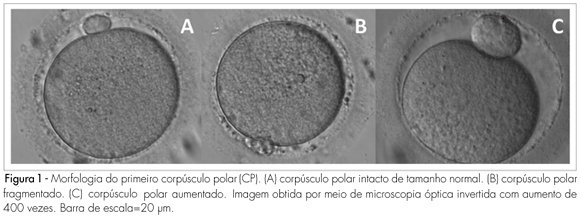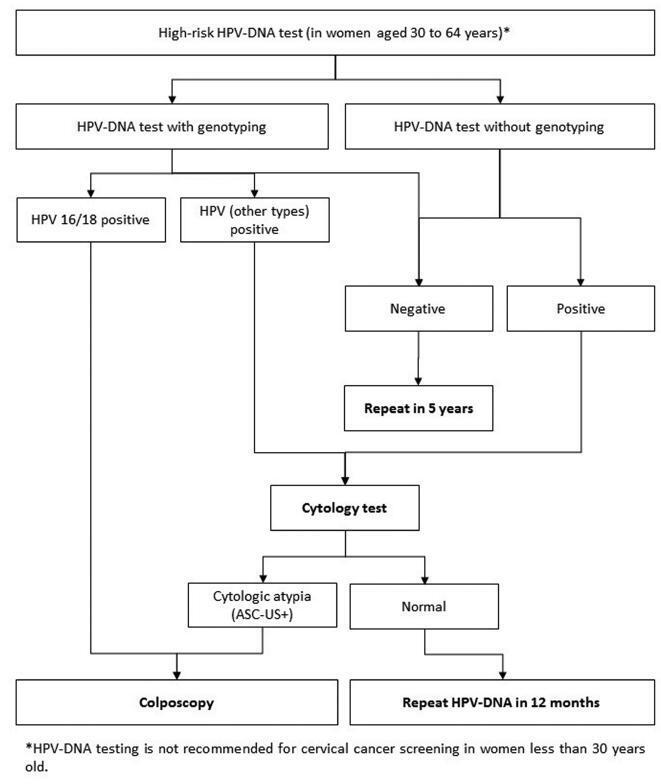Summary
Revista Brasileira de Ginecologia e Obstetrícia. 2015;37(1):36-41
DOI 10.1590/SO100-720320140005179
To evaluate the sparing of fertility and ovaries in women submitted to surgical treatment for benign adnexal tumors.
Between February 2010 and January 2014, 206 patients were included in this observational study as they were submitted to surgical treatment for benign ovarian tumors at CAISM, a tertiary hospital. Fertility sparing surgery was defined as tumorectomy or unilateral salpingoophorectomy without hysterectomy in premenopausal women. Preservation of the ovary occurred when at least one ovary or part of it was mantained.
Of the 206 women with benign tumors, 120 (58%) were premenopausal and 86 (42%) were postmenopausal. There were 36 (30%) ovarian germ cell tumors, 31 (26%) epithelial neoplasms and 11 (9%) sex-cord stromal tumors among premenopausal women. In the group of postmenopausal women, 35 (41%) epithelial neoplasms, 27 (31%) sex-cord stromal tumors and 8 (9%) ovarian germ cell tumors were identified. Among 36 women with non-neoplastic ovarian tumors, 21 (58%) had endometriomas and 8 (22%) functional cysts. Among 22 women with extra-ovarian tumors, uterine leiomyomatosis was the most frequent finding (50%). In the group of women who were ≤35 years old, 26 (57%) were treated by tumorectomy and 18 (39%) were submitted to unilateral salpingoophorectomy with sparing of the uterus and the contralateral ovary. Women who were ≤35 years old were more frequently operated by laparoscopy which was associated with a higher number of fertility sparing procedures when compared to laparotomy (p<0.01). Twenty-six (28%) women submitted to hysterectomy with bilateral salpingoophorectomy were premenopausal.
Although there is a trend to perform only tumorectomy in women who are ≤35 years old, a significant number of young women is still treated by salpingoophorectomy. Among 36- to 45-year-old women, only 70% had their fertility spared, while 20% had both ovaries removed. However, whenever possible, we must try to preserve the ovaries, mainly in premenopausal women.
Summary
Revista Brasileira de Ginecologia e Obstetrícia. 2008;30(1):36-41
DOI 10.1590/S0100-72032008000100007
PURPOSE: to establish whether there is a predictive relationship between the antral follicle count (AFC) on the second day of the cycle and the response pattern in controlled ovarian hyperstimulation cycles for intracytoplasmic sperm injection (ICSI). METHODS: a prospective study developed from May 2004 to May 2005, in which 51 patients aged <37 years old were submitted to assisted reproduction/ICSI in ovarian hyperstimulation protocol with gonadotropin recombinant and gonadotropin-releasing hormone (GnRH) antagonist. A transvaginal ultrasonography was performed on the second day of the cycle, to count the number of follicles measuring 2 to 10 mm, at the beginning of stimulus, data compared with the number of follicles with >15 mm on the day of ovulation triggering, the total number of oocytes retrieved and in metaphases II, the number of good quality embryos transferred and pregnancy rate. The statistical analysis was performed by the t-Student test and the Mann-Whitney test, with statistical significance of 5% (p<0.05). RESULTS: the mean age in the study group was 32.4 years. The AFC average was 7.1, minimum of 1 and maximum of 16. Considering AFC as a main variable, a significant direct correlation was observed with the number of follicles >15 mm on the day of ovulation triggering (p=0.0001), the total number of oocytes retrieved (p=0.0001) and those in metaphases II (p=0.0001). Such correlation between AFC and pregnancy was not observed (p=0.43). There was no significant correlation between AFC and the number of good quality embryos transferred (p=0.081). CONCLUSIONS: AFC on the second day of the stimulated cycle can be used to predict the quality of ovarian stimulation, the number of oocytes retrieved and the number of mature oocytes in in vitro fertilization cycles using GnRH antagonist.
Summary
Revista Brasileira de Ginecologia e Obstetrícia. 2008;30(7):360-365
DOI 10.1590/S0100-72032008000700007
PURPOSE: to determine the relationship between the morphology of the first spindle pole of human oocytes and rates of fertilization, fragmentation and embryo quality in procedures of Intracytoplasmic Sperm Injection (ICSI). METHODS: retrospective study of 582 consecutive ICSI cycles, from July 2003 to July 2005. The morphology of the first spindle pole (SP) was assessed through the analysis of 3,177 oocytes in metaphase II, immediately before the ICSI procedure, always by the same observer. SP has been classified in the following categories: normal size intact, fragmented or augmented SP. Fertilization rate and fragmentation, and the number and rate of good quality embryos in each one of the three groups studied have been evaluated, 48 hours after ICSI (D2). Embryos with four cells, without fragmentation and with symmetric blastomeres in D2 were considered as of good quality. RESULTS: rates of fertilization, fragmentation and of good quality embryo formation, resulting from oocyte insemination, with augmented SP (20.7, 16.7 and 5% respectively) were significantly lower than the ones from intact and normal size SP (70.8, 62.5 and 19%, respectively) or from fragmented SP oocytes (69.7, 60.5 and 17.1%, respectively). CONCLUSIONS: it has been observed that the presence of augmented first spindle pole is related to worse rates of fertilization, fragmentation and bad quality embryo formation. Nevertheless, fragmentation in the first spindle pole of the oocyte does not seem to affect ICSI results.

Summary
Revista Brasileira de Ginecologia e Obstetrícia. 2018;40(6):360-368
Evidence-based clinical guidelines ensure best practice protocols are available in health care. There is a widespread use of human papillomavirus deoxyribonucleic acid (HPVDNA) tests in Brazil, regardless of the lack of official guidelines. On behalf of the Brazilian Association for the Lower Genital Tract Pathology and Colposcopy (ABPTGIC, in the Portuguese acronym), a team of reviewers searched for published evidence and developed a set of recommendations for the use of HPV-DNA tests in cervical cancer screening in Brazil. The product of this process was debated and consensus was sought by the participants. One concern of the authors was the inclusion of these tests in the assessment of women with cytologic atypia and women treated for cervical intraepithelial neoplasia (CIN). Testing for HPV is recommended in an organized screening scenario to identify women with precursor lesions or asymptomatic cervical cancer older than 30 years of age, and it can be performed every 5 years. It also has value after the cytology showing atypical squamous cells of undetermined significance (ASC-US) or low-grade squamous intraepithelial lesions (LSILs) as a triage test for colposcopy, in the investigation of other cytological alterations when no abnormal findings are observed at colposcopy, seeking to exclude disease, or, further, after treatment of high-grade cervical intraepithelial neoplasia, to rule out residual disease.

Summary
Revista Brasileira de Ginecologia e Obstetrícia. 2022;44(4):360-368
To assess the levels of physical activity and exercise practice, and examine the associated maternal characteristics; as well as the anxiety levels of high-risk pregnant women.
A cross-sectional study conducted with pregnant women at a High-risk Prenatal Clinic (HRPC) in a tertiary maternity. Pregnant women of 18 to 40-years-old, with a single fetus, and with gestational age up to 38 weeks were included. The level of physical activity and exercise practice of the study’s participants were investigated using the Pregnancy Physical Activity Questionnaire (PPAQ). Maternal sociodemographic, anthropometric, and medical data were investigated using a specific form. For anxiety levels, the short version of the State-Trait Anxiety Inventory (STAI) was applied. We used the Student t-test, chi-square test, odds ratio (OR) with 95% confidence interval (95% CI) and multiple logistic regression. The significance level was 5%.
Among the 109 pregnant women included, 82 (75.2%) were classified as sedentary/little active. The higher energy expenditure were for domestic activities (133.81±81.84 METs), followed by work-related activities (40.77±84.71 METs). Only 19.3% women exercised during pregnancy (4.76±12.47 METs), with slow walking being the most reported exercise. A higher level of education was the most important factor associated with women being moderately or vigorously active (OR=29.8; 95% CI 4.9-117.8). Nulliparity (OR=3.1; 95% CI 1.0-9.1), low levels of anxiety (OR=3.6; 95% CI 1.2-10.7), and unemployment (OR=4.8; 95% CI 1.1-19.6) were associated with the practice of exercise during pregnancy.
Most women with high-risk pregnancies exhibited a sedentary pattern, with low prevalence of physical exercise practice. Recognizing factors that hinder the adoption of a more physically active lifestyle is essential for an individualized guidance regarding exercise during pregnancy.
Summary
Revista Brasileira de Ginecologia e Obstetrícia. 1999;21(6):360-360
Summary
Revista Brasileira de Ginecologia e Obstetrícia. 1999;21(6):360-360
DOI 10.1590/S0100-72031999000600013
Summary
Revista Brasileira de Ginecologia e Obstetrícia. 2010;32(7):360-360